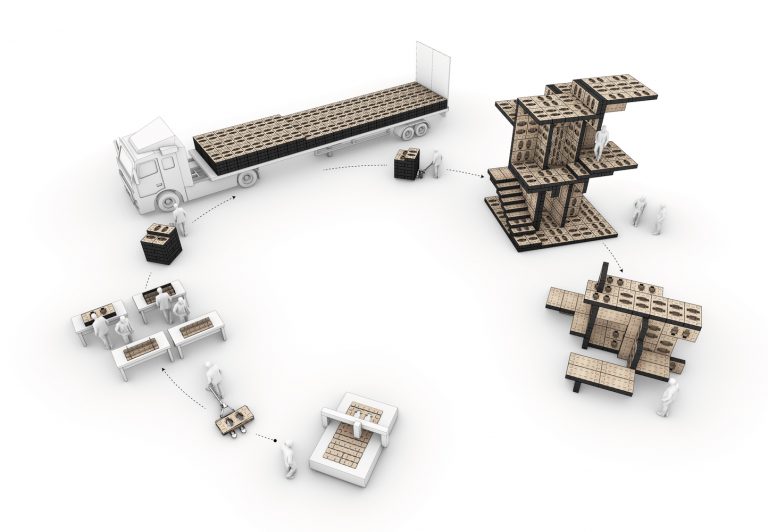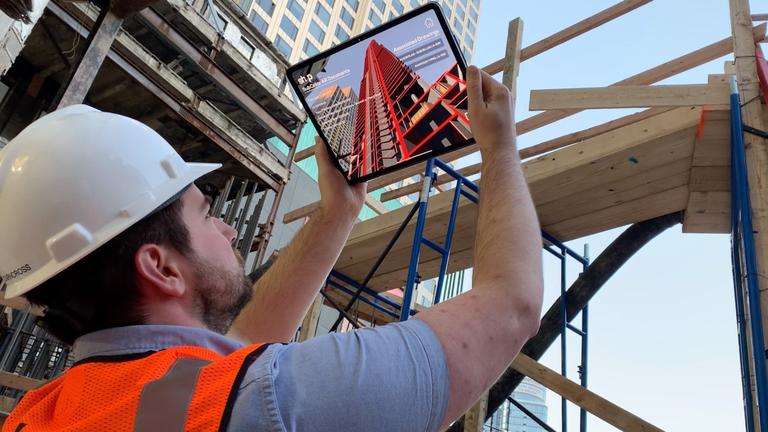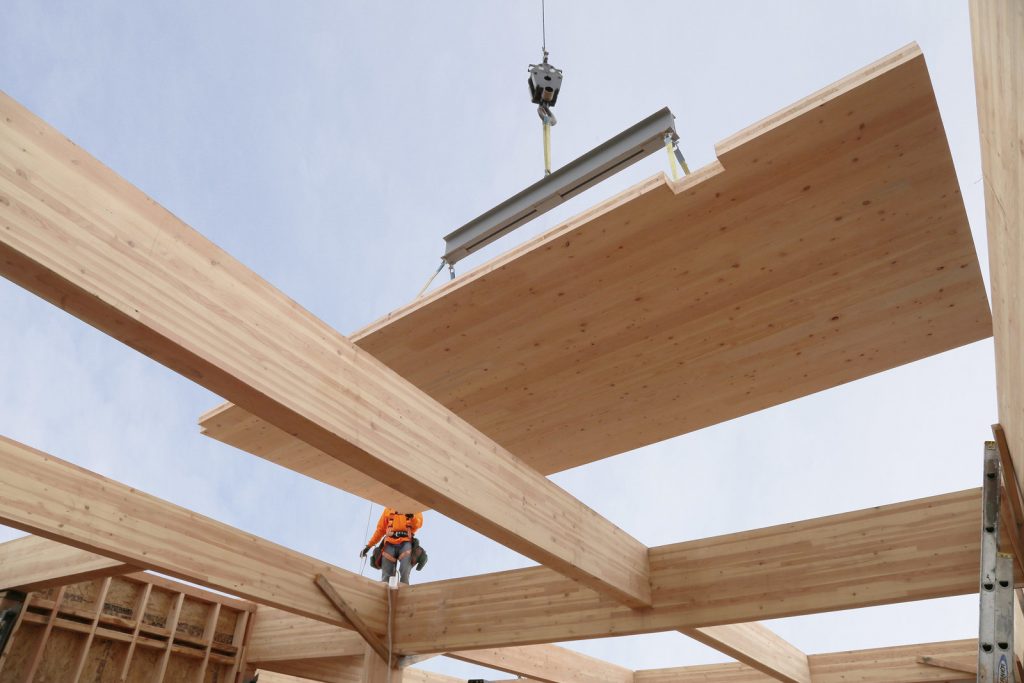Advancing Architectural Frontiers with Emerging Creative Technologies
Banner Image Credit: Danny Forster & Architecture
Authored by Elias Darham, AIA, LEED AP BD+C, Architect II
Architecture must be a vanguard for creative technology – leveraging ingenuity in the pursuit of quality and efficiency. Technology in architecture primarily appears on two fronts: how we visualize our stories and how we shape and imbue those narratives into the built environment.
Comprehensive Storytelling
Full ownership of visual storytelling is an invaluable differentiator among architects across the globe. The difference in service is parallel to the awareness of the worlds that we, as architects, help to shape. Coherent and clear intent sets expectations of quality from the earliest stages of a project, for both client service and the work itself. Masterful artistry stands out while standard and mediocre work will blend in, or worse, bore. This deep drive for artistry is what sets apart architectural design firms like Portman Architects.
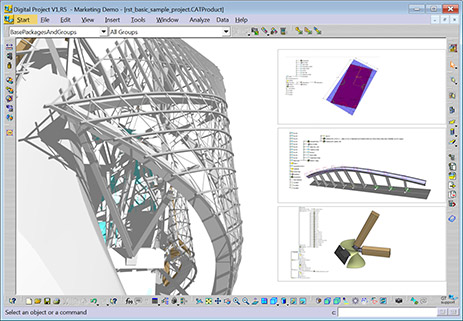
Over the past five years, the effect of real-time rendering platforms born out of the gaming industry has been undeniable. These high-powered rendering tools, such as Enscape or Unity, enable impressive visuals to be more accessible than ever. Now, designers can produce graphics with relative ease, focusing more of their energy on the full-fledged evolution of their ideas; this is where ownership of storytelling reasserts itself. To advance bold design, architects must persist in developing the atmosphere and details of the images they produce. Our design work expands from the architectural object to a holistic depiction of life in every frame. Designing a hotel, for example, must go beyond dropping a pretty building onto a blank site and snapping a picture of the entrance. To do so would underutilize a critical asset in describing how we understand and interact with a space. Our approach necessitates developing a unified concept of architectural design, physical space, people, and sense of place. An arrival yields the opportunity to merge these aspects together to reinforce the overarching diagram. In this way, the DNA of our work is more coherent on an immersive, experiential level. Our intrinsic motivation to realize robust works of art is not conventional; this creative ambition allows us to invariably produce masterful, tailored work that speaks to the locality, authenticity, and character of a project.
For the conceptual design of ongoing international projects, Portman Architects initially collaborated to produce imagery for several distinct concepts, each with its own supporting narrative and programmatic data. This approach mapped out optimal solutions for the project by marrying the data-driven process of programming with the qualitative operation of storytelling. Data delivers tangible substance to the range of possible outcomes while the resulting image sets up expectations for design. The sheer scale of this experimentation at such an early stage attests to the rigor of our team’s discovery strategy. The resulting quality of our work looks to support architectural innovation – moving much further than a cheap image or area table to rethink perception, synergize resources and ultimately test the boundaries that advance industry. For our clients, this process ensures that no matter the project, it is met with design excellence that reflects a deep-rooted sense of place and the data to back it up. This core discovery process is what established a blended direction that is bold, appropriate, and feasible in its approach to bringing convergence and fluid connections to authentic placemaking.
Over the coming decade, extended reality media – AR, VR, XR, MR – all point towards greater relevance in visual media production. Recent reports project VR and AR to become a $300 Billion market by 2024. The AEC and real estate developer industries can amplify their interaction with the world to capitalize on new forms of storytelling. Portman Architects positions itself within this mega-trend with undeniable architectural talent yielding the expertise necessary to produce the next generation of stories. The pragmatic value of this technological skill set is clear over time. Talent with experience and motivation bears the familiarity to not only set the market benchmark but also to deliver a consistently better caliber of work.
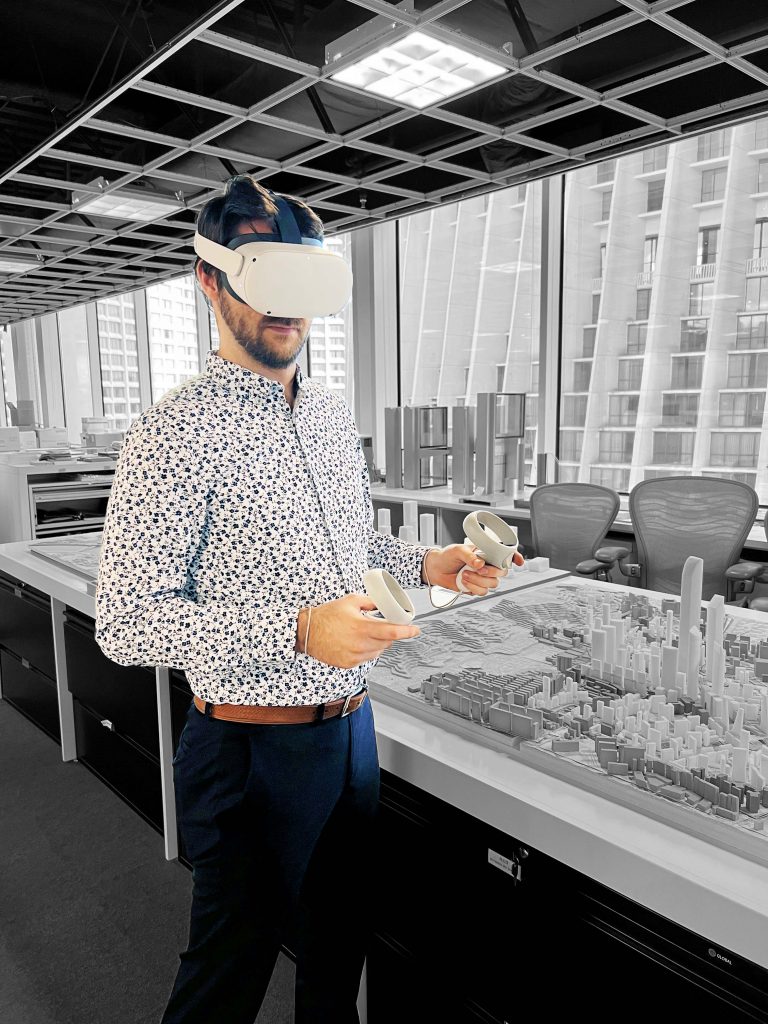
Digital Product
Creative design services extend far beyond the discrete physical limits of development. A whole world of client service exists before a project even kicks off, so why should built work be considered our sole prolific output? Architecture does itself a disservice by not capitalizing on the innumerable opportunities and options made on the road to a built project.
The module drives a large part of residential and hospitality design and is dialed in by brand, flag, and price point. As a result, it becomes increasingly important to hold onto our knowledge of these variables. With each project, a brand can have a standard to which the architect must respond. Automation offers Portman Architects a means to retain this knowledge and efficiently use it to provide better client service and products.
The future of residential and hospitality will be more akin to an assembly of discrete elements. Modular design has been around for ages, but with increased manufacturing automation, the necessity for remote coordination during the pandemic, and the drive for shorter construction processes, the discrete module offers an efficient path to satisfy all three. It will take precise skill and experience to deliver. Manufacturers and research are already heading in this direction. Prescient and cross-laminated timber, among other structural systems, is poised to have a substantial impact on the market, as the efficiency of their systems leads to greater harmony with the aforementioned drivers. An investment of $190 million last year in the strategic growth of Prescient by Eldridge and JE Dunn is no small indicator of agreement in where the market is heading.
Yet why stop at a manufactured assembly? Again, the automation of the module comes into play. Architects have the potential to fully develop a module from concept to construction and keep it around as a discrete component for future work. This can play out directly into another project as well as be a stand-alone library of key or unit types. In either case, the automation of the base driver for a project type offers an attractive product, enabling designers to focus their time on client service and what is unique to a project rather than reinventing the wheel. Portman Architects has a proficient understanding of this sense of automation. From the library of legacy projects to our current talent, we understand what drives our work and, ultimately, where its future value can be.
Central to project delivery has always been how architects package their work. Cloud-based modeling has restructured how teams deliver, evaluate, and document projects. The importance of this form of digital production and coordination becomes increasingly evident across all project phases.
Documentation has experienced a fundamental shift in recent years; the digital model’s increasing importance underlines the accuracy it must now reflect. It will no longer be enough to have a catch-all of specifications on the tail end of construction documentation, leaving a gap between model and specification. Documentation and BIM modeling are no longer separate things. The design team must push towards a literal twinning of the digital model, real site conditions, documentation, specifications, and end product. In the not-so-distant future, the model will be the primary deliverable. This will not only be highly useful, but it will also be more efficient and accurate. On the front end, the model enables the team to evaluate the design to determine program direction or sustainable baseline. For construction, it will mean greater resolution and nuanced coordination. For post-occupancy and beyond, the model will provide a tangible object to manage or evaluate systems and commission projects. In conjunction with the automation of the module, the emerging importance of the BIM model highlights the crucial coordination of systems and assemblies across modules. Continuity of systems they must share, such as structure, MEP, weather, and thermal continuity, is fundamentally smart. An intelligent model offers a way to simulate and document those conditions; Portman Architects has the insight, drive, and talent to proactively coordinate these systems to transform the creative narrative into a more efficient and profitable architecture.

